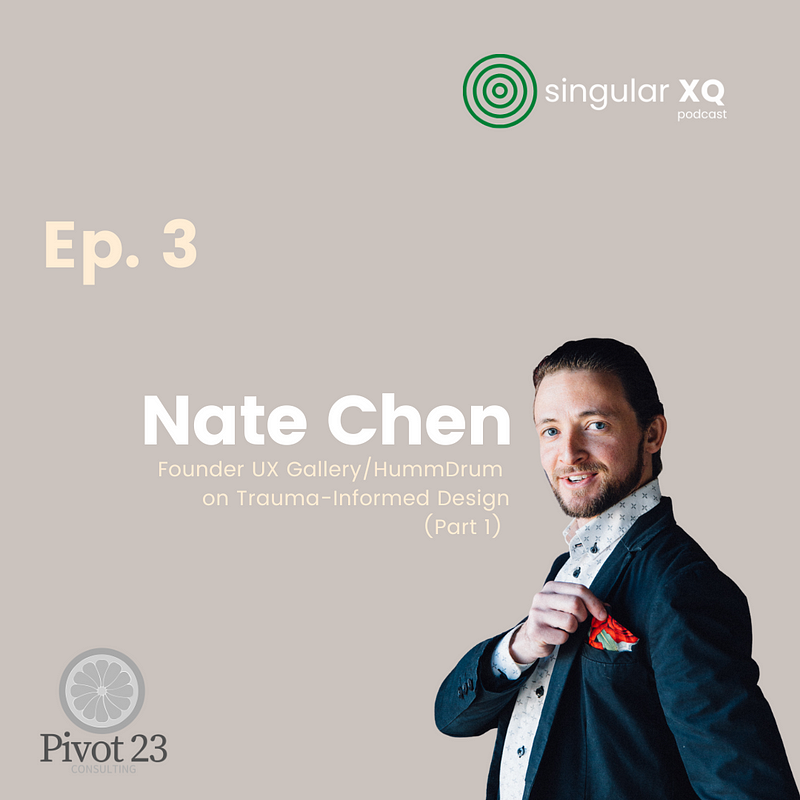Singular XQ Ep 3: Nate Chen, Trauma-Informed Design (Part 1)
Episode 3 of Singular XQ, Nate Chen and Trauma-Informed Design.

Episode 3 of Singular XQ, Nate Chen and Trauma-Informed Design.
As an advocate for DEI practices in UX Design, I always argue that the business case for doing so is straightforward.
When you design for the margins, you improve the experience for all.
If I design for people with differences in vision, the interface will become easier to understand and use for all people. The additional space needed for larger fonts means I must pare down what I include in my wireframe.
And don’t we all know by now that the intelligent designer can be identified by what they decide NOT to design? Less is more.
This week Singular XQ is dropping a chat between Nate Chen and me that includes a lot about Trauma-Informed Design.
What is Trauma-Informed Design?
Simply put, trauma-informed design became an essential concept in urban planning and architecture when people wanted to design spaces and multi-dweller units for people recovering from sustained traumas. The idea spread into all areas of design, encouraging designers to think about PTSD when designing for traumatized users.
I’ve started deploying the principles of Trauma-Informed in design, not just in dealing with apps targeting traumatized users specifically. Its principle of “do no harm” seems to be an ethical imperative in all cases and at all times. Why? Two reasons.
- At any given time, roughly 6% of the population is diagnosed with clinical PTSD. That means you have a good chance of greeting people with PTSD in any given user group, and it makes sense to include them in your design considerations.
- The pandemic has put the entire globe in a post-traumatic state.
Look for a later post about what the principles of Trauma-Informed design mean in UX.
In the meantime, what fun it was to have Nate Chen, whom I met in a mentoring session several years ago. It’s also the longest episode I’ve recorded because Nate had so much to talk about, especially our mutual passion for trauma-informed design. So Nate’s interview will be a 2-parter, with the next installment dropping next week.
As always, many thanks to Brogan Molloy, editor extraordinaire.




